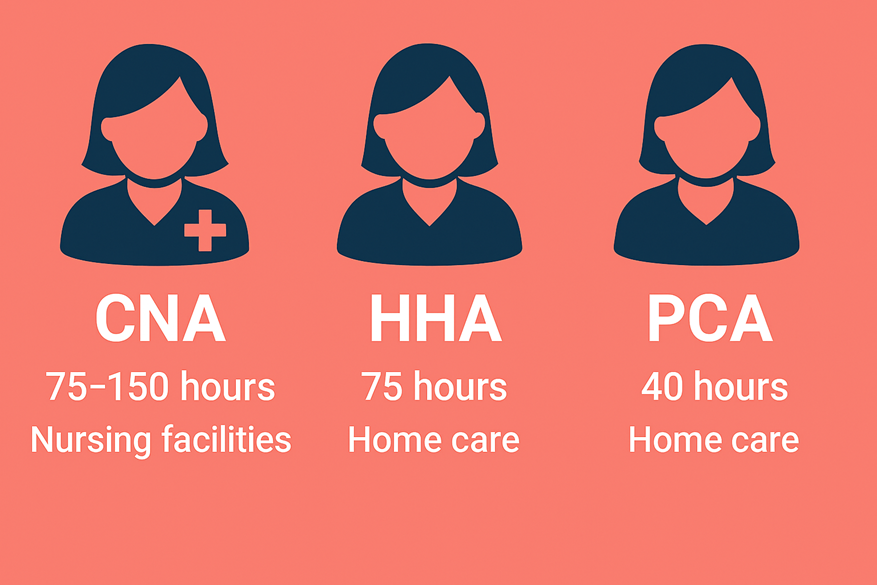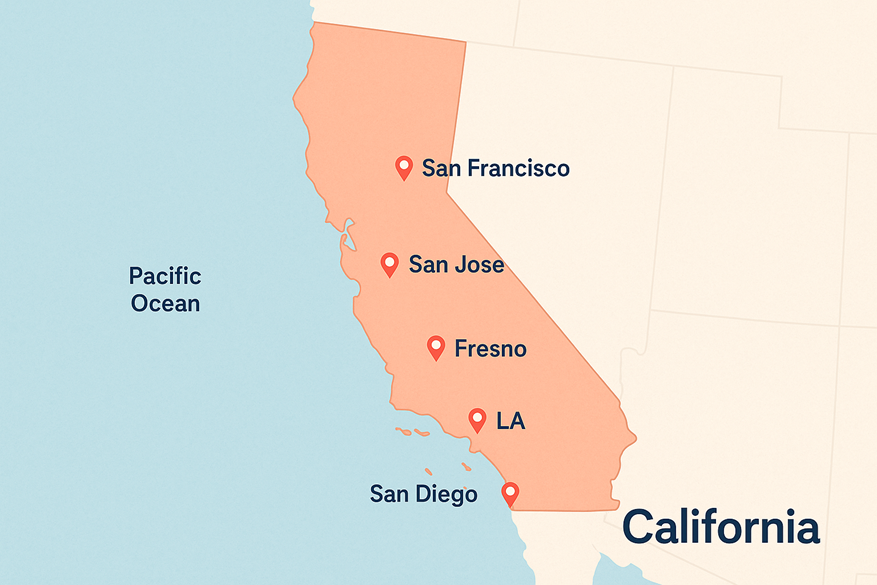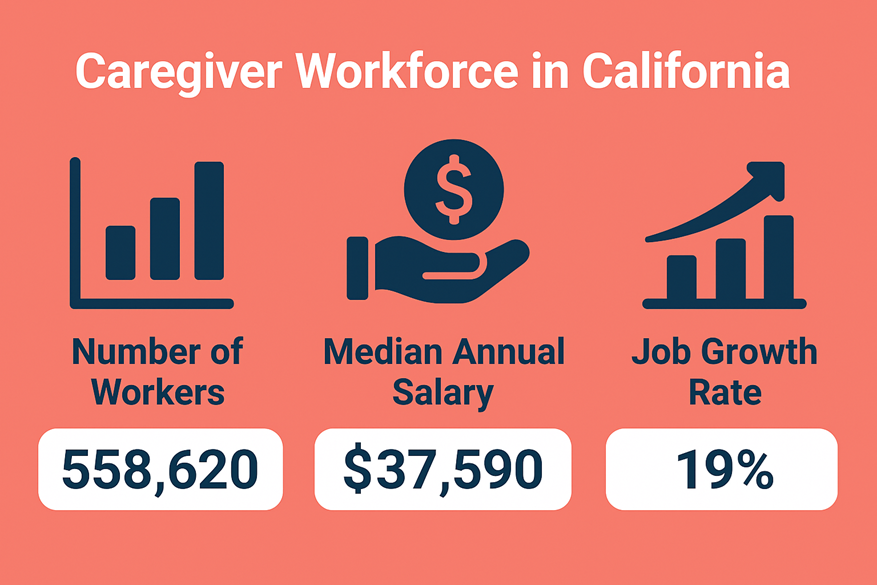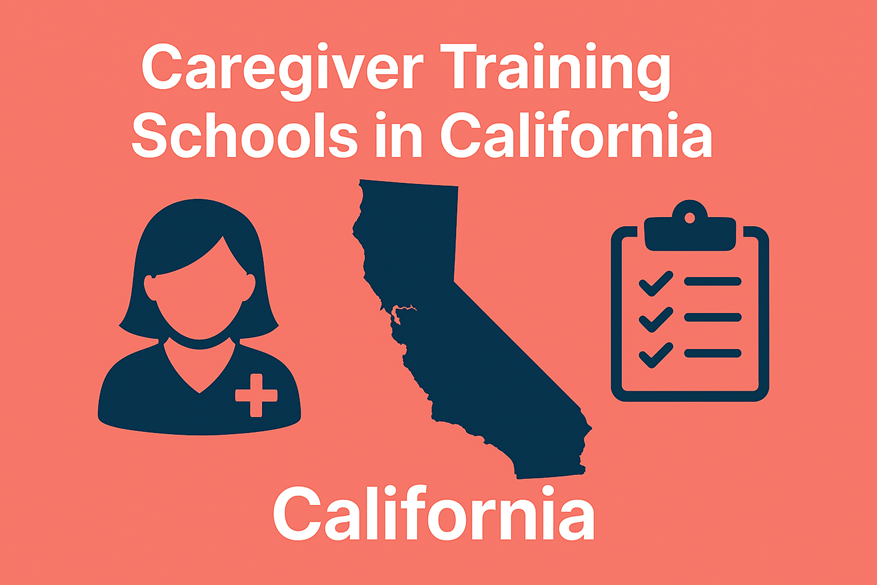If you’re considering a caregiving career in California, you’re entering one of the most meaningful and in-demand healthcare fields. Whether you want to work in home care, assisted living, or a medical facility, the first step is getting the right training. This guide breaks down where to find Certified Nursing Assistant (CNA) and Home Health Aide (HHA) training programs across California. We include both public colleges and vocational schools, with free and paid options, job market data (updated May 2025), and links to help you take the next step.
What Is the Difference Between CNA, HHA, and PCA?

If you’re new to caregiving, here’s a quick breakdown of the most common roles:
- CNA (Certified Nursing Assistant): Works in hospitals, long-term care facilities, and clinics. Requires at least 160 hours of state-approved training in California.
- HHA (Home Health Aide): Often works in private homes or home-care agencies. Requires 120 hours of training or an additional 40 hours if you’re already a CNA.
- PCA (Personal Care Aide): May assist with bathing, meals, or light housekeeping, typically without needing a state license, but training is still required for Medicaid-funded roles like IHSS.
Public & Community College Programs for Caregivers (CNA/HHA)

California’s network of community colleges offers state-approved CNA and HHA training with affordable tuition and structured academic support. These programs are ideal for students looking for recognized certifications backed by accredited institutions.
Most community colleges offer CNA programs that run for 6–12 weeks, include both classroom and clinical hours, and prepare students for the California Nurse Aide Registry exam. Some also offer HHA certifications or short add-on programs for those who already have CNA credentials.
Vocational & Career Caregiver Schools in California
Private career schools offer flexible training programs, often with shorter time commitments. These are popular for career changers or adults looking to enter the caregiving field quickly. Many are state-approved and offer payment plans or financial aid.
Vocational schools may complete programs in as little as 21 days, particularly for HHAs and accelerated CNA formats. Be sure to confirm if the school is CDPH-approved and check reviews from past graduates.
2025 Job Market & Certification Data for California Caregivers (as of May 2025)

Active Workforce Statistics
Caregivers make up one of the largest healthcare-related professions in the state. As of early 2025:
- CNAs: Over 138,000 certified in California
- HHAs: More than 25,000 working in home care and facilities
- IHSS (In-Home Supportive Services): Over 635,000 providers enrolled in this state program that allows family or informal caregivers to be compensated
Salary Overview
Wages for caregiving roles in California tend to be higher than the national average:
- CNAs: Median wage of $18.96/hour or ~$39,430/year
- HHAs: Median wage of $16.78/hour or ~$34,900/year
- Unionized or hospital-employed CNAs can earn over $50,000 annually with benefits
Job Demand
California faces a growing need for caregivers due to an aging population and expanding home-based care systems:
- CNA openings nationwide: Over 216,000 per year
- Projected growth in CA: 14% from 2023 to 2033
- HHA job growth nationwide: 21% from 2023 to 2033
- Hot job regions: Greater Los Angeles, San Diego, San Jose, Fresno, and the Inland Empire
Program & Licensing Info
To legally work as a CNA or HHA in California, you must:
- Complete a CDPH-approved program (160h for CNA, 120h for HHA)
- Pass a background check and TB screening
- Pass the state competency exam
- Maintain certification with continuing education and renewals
How to Choose the Right Program
When picking a caregiver school, ask:
- Is the program approved by the California Department of Public Health (CDPH)?
- Does it include clinical hours in addition to classroom training?
- Is it accelerated or part-time?
- What is the total cost, and are there payment plans?
- Are there job placement or career support services?
If you’re looking for free options, nonprofits and IHSS-focused schools often provide no-cost training to qualified applicants. Community colleges may also offer financial aid.
Final Thoughts
California is one of the best places to become a caregiver. With hundreds of state-approved training programs, solid wages, and consistent job growth, it’s a smart career path for people looking to make a difference. Whether you choose a college-based program or a vocational school, getting certified opens doors to meaningful and stable employment.
Suggest an Update
Are you a school representative or recent graduate? If you see outdated information or want your program listed, contact us via our contact form. We aim to keep this guide accurate and helpful.
Sources
- U.S. Bureau of Labor Statistics (BLS) – Home Health and Personal Care Aides
- U.S. Bureau of Labor Statistics (BLS) – Nursing Assistants and Orderlies
- California Department of Public Health – Aide and Technician Certification Section (ATCS)
- Public Policy Institute of California – California’s Care Workforce
- O*NET Online – California Employment Projections for Nursing Assistants
- BLS Occupational Employment and Wage Statistics – May 2023 Data for HHAs in California
- McKnight’s Home Care – Home care aides dominate U.S. workforce
Disclaimer
This article is for informational purposes only and does not constitute medical, legal, or educational advice. Details such as pricing, duration, and program availability may change. Always confirm directly with the training provider or California Department of Public Health (CDPH).

